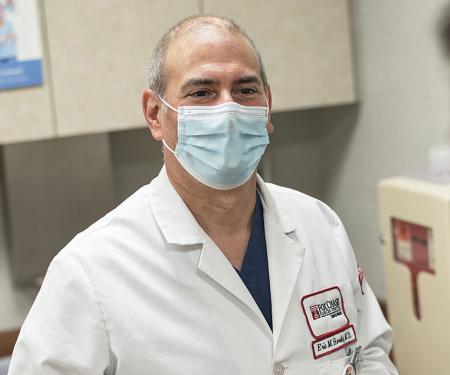Related Articles
00 / 00
New Inpatient Visitor Check-In Process Effective March 10. Learn more here.

Request an Appointment
Professor, Department of Radiation Oncology
Chief, Division of Breast Radiation Oncology
Vice Chair for Quality Assurance and Process Improvement
Breast Cancer
Brachytherapy
After completing my training at Fox Chase, I joined the radiation oncology department attending staff in 1999. I chose to stay at Fox Chase because I wanted to remain in a research setting at a hospital with the highest excellence in cancer care. In my practice, I specialize in treating patients with gynecological cancers, breast cancer and sarcoma.
As a female oncologist, I address the many unique treatment issues specific to women. My patients discuss their personal issues surrounding their cancer, as well as the side effects of treatment. It is gratifying to offer comfort, not only through radiation treatment, but afterwards in their follow-up care.
As director of breast and gynecologic radiation oncology, I believe it is important to spend time educating my patients. These women have many personal issues related to quality-of-life. We provide education and support from diagnosis throughout treatment and follow-up care.
A particular accomplishment of mine was changing the practice of gynecological high-dose-rate brachytherapy in 2001 from an inpatient to an outpatient procedure for patients. This procedure is now much easier for patients to tolerate, while maximizing our highest quality of care.
At Fox Chase, we use the most sophisticated technology for both external beam (IMRT) radiation therapy and brachytherapy. We have a CT and an MRI simulator for gynecological cancer treatment planning. We use CT/MR-based brachytherapy treatment planning for patients with gynecological cancers.
As a breast cancer specialist, I am part of the Breast Evaluation Center's multispecialty team at Fox Chase. My role is integral in developing the best course of treatment for our newly diagnosed breast cancer patients. At Fox Chase, we use IMRT to treat women with breast cancer.
In treating patients with sarcoma, I collaborate with the surgeons and medical oncologists to determine the best course of treatment. Before surgery, radiation therapy helps to reduce the tumor's size, making it easier to remove. Following surgery, radiation therapy can improve local control and chance for cure. In treating sarcomas, we use an MR simulator in the planning process, which helps improve accuracy of treatment.
Research is another interest of mine. I am a member of multiple national committees aimed at constantly improving and advancing the treatment and outcome of gynecologic and breast cancers. I am the principal investigator for several national trials evaluating novel, innovative approaches for breast and gynecologic cancer treatment. Each year, I am invited to present at many professional meetings, including the Gynecologic Oncology Group (GOG), ASTRO (American Society for Therapeutic Radiology and Oncology), and the Radiation Therapy Oncology Group (RTOG).

At 36, Patti Rose, a wife and mother to seven children, was shocked to learn she had a rare form of breast cancer. Because her husband works in construction and had done several projects for Fox Chase Cancer Center, they knew right away Fox Chase was the right place for Patti's treatment. At Fox Chase, Patti underwent chemotherapy and radiation therapy, followed by a lumpectomy and additional surgery. The experience was extremely difficult, but Patti credits the staff at Fox Chase for giving her a positive outlook and helping her get through it. Today, she is cancer free and could not be more pleased with the treatment she received. "Fox Chase helped me to be positive. If I didn’t have that connection with doctors and nurses and even the security guard that I would talk to every time I was there, I think I would have felt more afraid," she said. "Knowing all those people were praying for me, thinking of me, and trying to get me through it made me feel like I could overcome it."
Breast Cancer; Gynecologic Cancers; Brachytherapy
The following ratings and reviews are based on verified feedback collected from independently administered patient experience surveys. The ratings and comments submitted by patients reflect their own views and opinions. Patient identities are withheld to ensure confidentiality and privacy. Learn more about our Patient Experience Ratings.









Patient comments